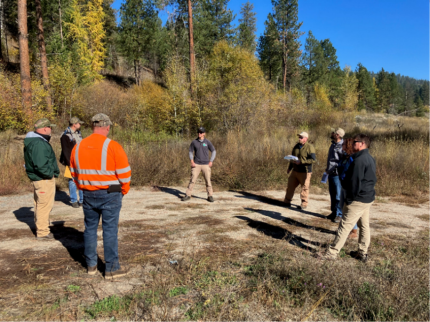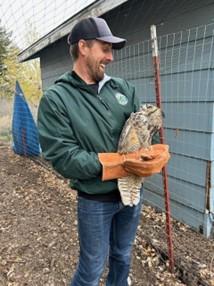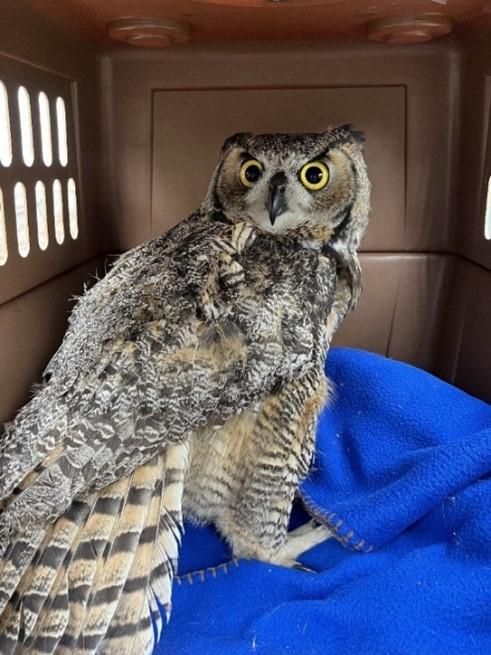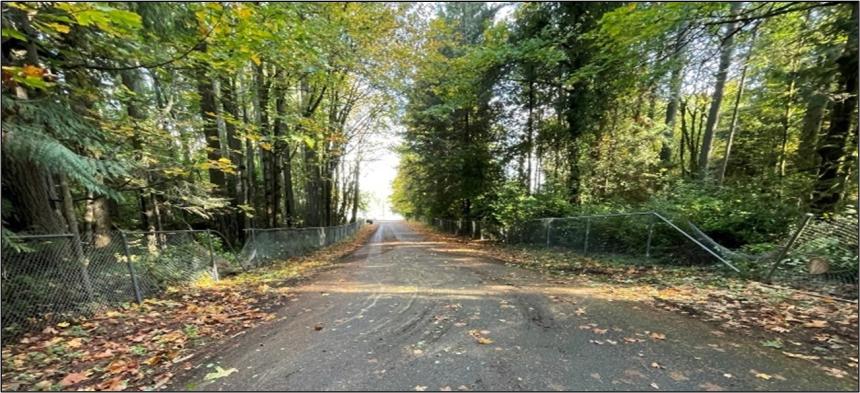Biweekly report Oct16-31 2024 - Region 4 (North Puget Sound)
Managing Wildlife Populations
New Game Reserve Boundary Markers: District 14 Wildlife Biologists Waddell and Soltysiak worked with Lands Weed Management staff member Traurig to place new buoy markers for the Swinomish Spit Game Reserve in Padilla Bay prior to the October duck and goose seasons. Hunters are not allowed to hunt within the boundaries of the game reserve. Full details of the Swinomish Spit Game Reserve boundaries can be found in WAC 220-411-220.
End of North Cascades 2023-2024 Fisher Camera Monitoring: District 12, as with other districts and partners, wrapped up fisher monitoring in North Cascades. District 12 retrieved their final camera set that was up in the higher country of the Alpine Lakes Wilderness Area.
CITES Bobcat, River Otter Sealing, Cougar Sealing, Bear Tooth Processing, Mountain Goat, Bighorn Sheep sample and marking needs: With the beginning of various hunts, animals have been coming in for sealing and sampling needs. Staff members throughout the region have been responding to requests, with customer service assisting with appointment setting at the Mill Creek or La Conner offices. District 12 have processed bobcat (new jaw and DNA sampling requirements), cougar, bear, and bighorn sheep thus far.
Common Loon Platform Fall Season Efforts: District 12 went around to three area lakes to remove and winterize area nesting platforms for the state-listed common loon.
Wildlife disease in the North Puget Sound Islands: An increase in reports of a variety of wildlife diseases has been noted this month. Hundreds of feral domestic European rabbits (Oryctolagus cuniculus) have been reported dead on Orcas, Lopez and San Juan Islands and samples submitted to the Washington Animal Disease Diagnostic Laboratory identified Rabbit Hemorrhagic Disease Virus. A suspect carcass of an eastern cottontail from Whidbey Island was submitted, but results are still pending. Similarly, suspect cases of Adenovirus hemorrhagic disease have been reported in deer on Lopez and San Juan Islands but has not been confirmed due to fresh carcass availability.
Washington Habitat Connectivity Action Plan – Regional Review: Region 4 district wildlife biologists met with habitat staff members regarding regional review of the mapping products associated with Washington Habitat Connectivity Action Plan efforts.
South Fork Tolt Reservoir – FERC relicensing – Seattle Public Utilities: District 12 and habitat Federal Energy Regulatory Commission specialists continue to engage with city of Seattle and project review partners in ongoing consultation regarding relicensing needs. Topics include federally listed northern spotted owl, marbled murrelet, state listed common loon, larch mountain salamander, and other species of greatest conservation need under the state wildlife action plan. Seattle is working with Washington Department of Fish and Wildlife (WDFW), federal, tribal, local, and other partners to incorporate comments, study plans, monitoring, and mitigation related to the current relicensing efforts.
Bat White-nose Syndrome Monitoring and Research Collaborations – USGS: District 12 continues to work with Bat Specialist Abby Tobin and researchers at the United States Geological Survey (USGS) regarding “Air-DNA” sampling trials in various environments. District 12 retrieved samples that have been “soaking” under a bridge for the past few months. These will be processed and sent off for ongoing research at USGS. Future work may lead to rapid DNA testing for the causative fungus of White-nose Syndrome in bats within a given roost environment.
Special Permit Hunts – GMU 485 Green Elk and Deer: Biologist Smith assisted Tacoma Watershed Operations Security staff members in check station and hunter field assistance regarding the permit hunts held annually in the GMU 485 Green River unit. Another successful hunt!
Black Bear Release in Snohomish County: District 13 and conflict specialists assisted with a black bear release following successful rehabilitation at PAWS Wildlife Rehabilitation Center. This bear was collected by Conflict and Enforcement staff as a dehydrated and emaciated cub on a busy road near Concrete (orphaned by unknown reasons) and is now extremely healthy and roaming the forests near Verlot. We will be eagerly following the collar data from this individual and hoping it will experience a long and prosperous life!
Providing Conflict Prevention and Education
Coyote Outreach – Queen Anne and Magnolia, Seattle: Region 4 South Wildlife Conflict staff members, working with input regarding messaging from Enforcement and Communications and Public Engagement (CAPE), canvassed the Queen Anne and Magnolia neighborhoods of Seattle regarding Living with Coyote.
Providing Education and Outreach
Lopez Island Community Meeting to Discuss Public Safety During Hunting Season: District Wildlife Biologist Kurt Licence participated in a community meeting with WDFW Enforcement Program, San Juan County Sheriff’s Office, the Bureau of Land Mangement (BLM), San Juan County Land Bank (LB) and the County’s Prosecuting Attorney’s Office to discuss community concerns after a 2023 hunting accident on the island that resulted in the death of a hunter. The meeting was well attended by the community (for island standards) with 35 individuals engaged. In addition to discussing trends in hunting safety and the many merits of public deer hunting as a conservation and management tool, staff members outlined a plan to improve education, awareness, and safety regarding hunting on the island. This plan includes the construction and deployment of hunting information kiosks with free hunter orange vest available for borrowing at four separate trailheads leading to public hunting grounds. Kiosks were built and painted by WDFW Master Hunters. WDFW District and Regional staff members are also collaboratively staffing a hunting and wildlife information booth on the island during the deer general modern firearm seasons. Finally, WDFW Communications staff members have been sharing social media and blog posts to draw attention to the issue and provide a unified message with other natural resources and land management partners.
Other
Raptor Research Conference in Charlotte North Carolina: Biologist Licence attended the annual Raptor Research Foundation Conference in Charlotte this year and contributed to a presentation on a mercury contaminant assessment in bald eagles. This was a great opportunity to network with raptor researchers across multiple flyways and countries, share research findings, and most of all learn about cutting-edge technology, management, and data collection methods in the field. Information learned from this conference will be shared with relevant species leads and any staff members that are interested!






















































































